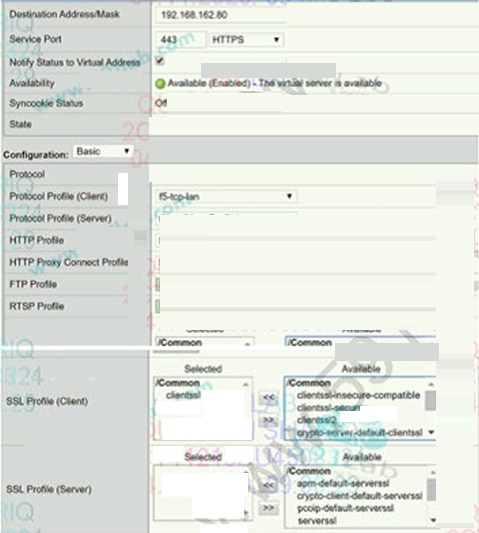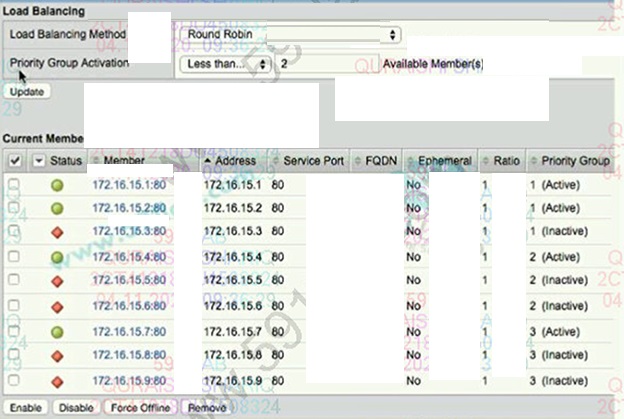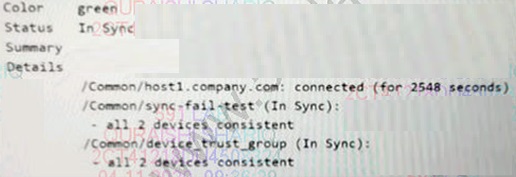F5 201 - TMOS Administration
A configuration change is made on the standby member of a device group.
What is displayed as "Recommended Action" on the Device Management Overview screen?
Refer to the exhibit.

A BIG-IP Administrator needs to deploy an application on the BIG-IP system to perform SSL offload and
re-encrypt the traffic to pool members.
During testing, users are unable to connect to the application.
What must the BIG-IP Administrator do to resolve the issue?
A BIG-IP Administrator needs to install a HotFix on a standalone BIG-IP device, which has HD1.1 as the Active Boot Location. The BIG-IP Administrator has already re-activated the license and created an UCS archive of the configuration. In which sequence should the BIG-IP Administrator perform the remaining steps?
Refer to the exhibit.

Which two pool members should be chosen for a new connection? (Choose two.)
Refer to the exhibit.

Which TMSH command generated this output?
Which VLANs must be enabled for a SNAT to perform as desired (translating only desired packets)?



